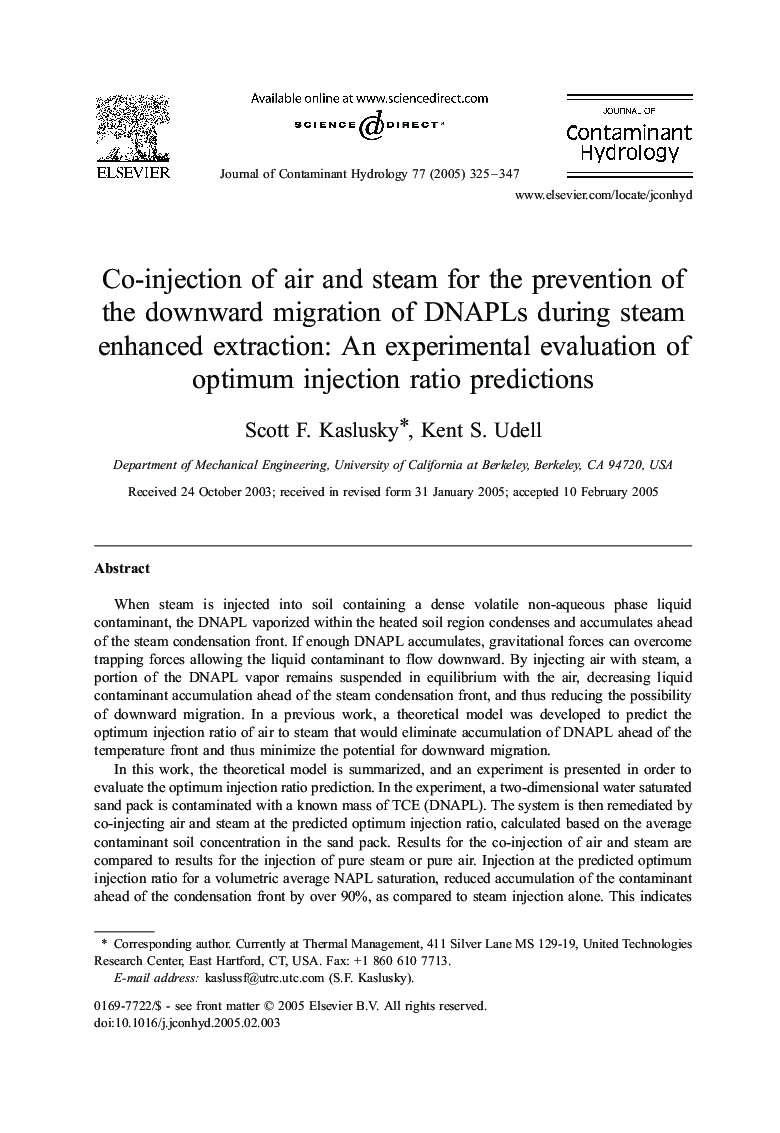| Article ID | Journal | Published Year | Pages | File Type |
|---|---|---|---|---|
| 9482818 | Journal of Contaminant Hydrology | 2005 | 23 Pages |
Abstract
In this work, the theoretical model is summarized, and an experiment is presented in order to evaluate the optimum injection ratio prediction. In the experiment, a two-dimensional water saturated sand pack is contaminated with a known mass of TCE (DNAPL). The system is then remediated by co-injecting air and steam at the predicted optimum injection ratio, calculated based on the average contaminant soil concentration in the sand pack. Results for the co-injection of air and steam are compared to results for the injection of pure steam or pure air. Injection at the predicted optimum injection ratio for a volumetric average NAPL saturation, reduced accumulation of the contaminant ahead of the condensation front by over 90%, as compared to steam injection alone. This indicates that the optimum injection ratio prediction is a valuable tool for limiting the spreading of DNAPL during steam-enhanced extraction. Injection at the optimum injection ratio resulted in earlier recovery of contaminant than for steam injection alone. Co-injection of steam and air is also shown to result in much higher recovery rates than air injection alone.
Related Topics
Physical Sciences and Engineering
Earth and Planetary Sciences
Earth-Surface Processes
Authors
Scott F. Kaslusky, Kent S. Udell,
